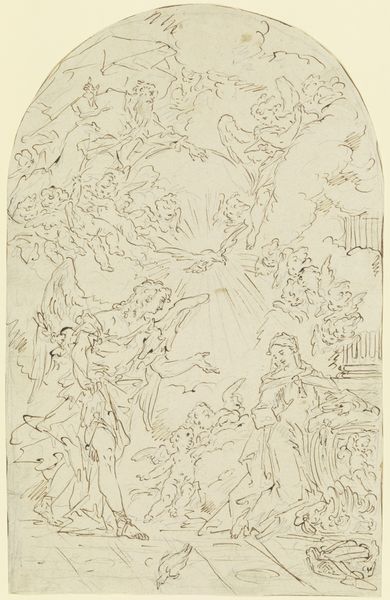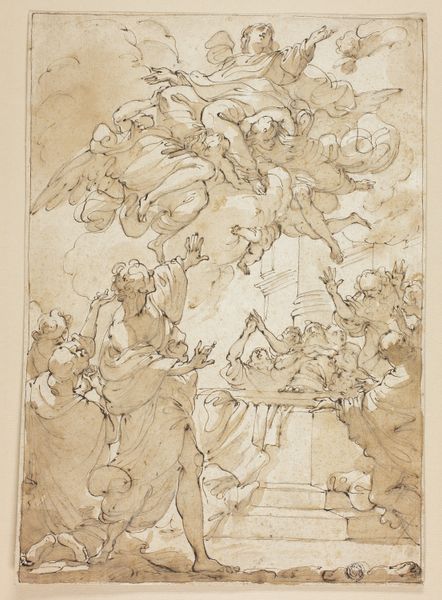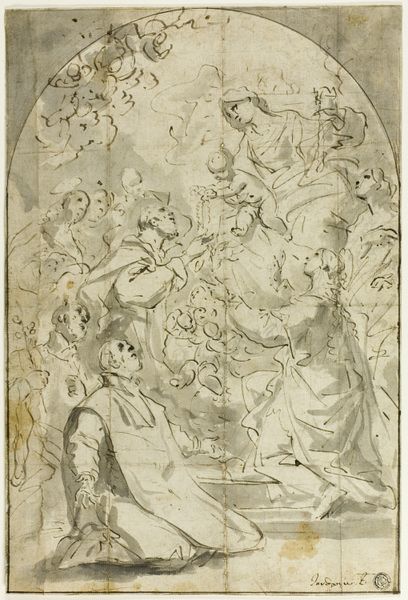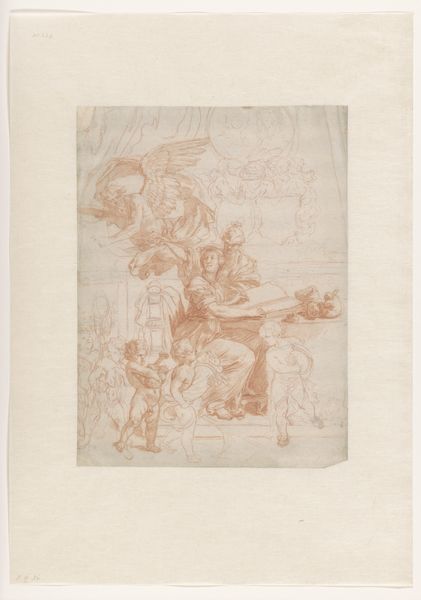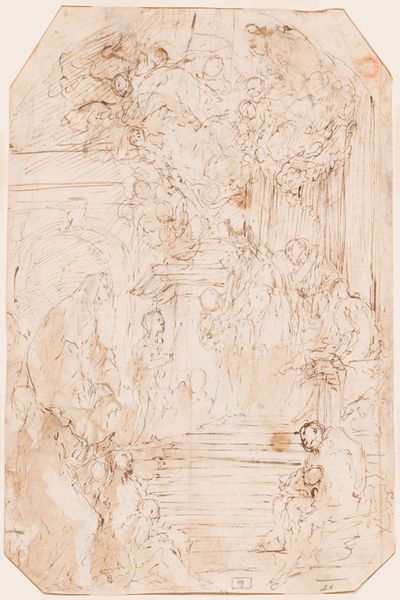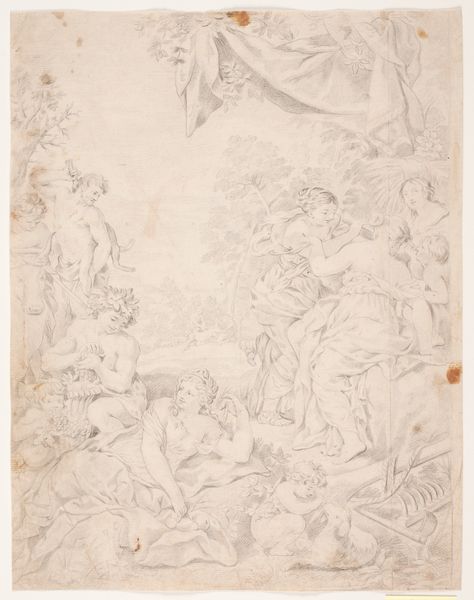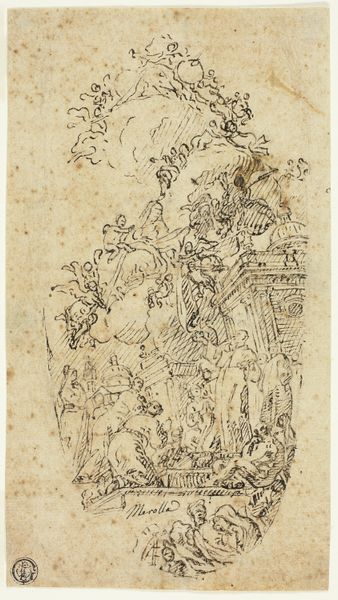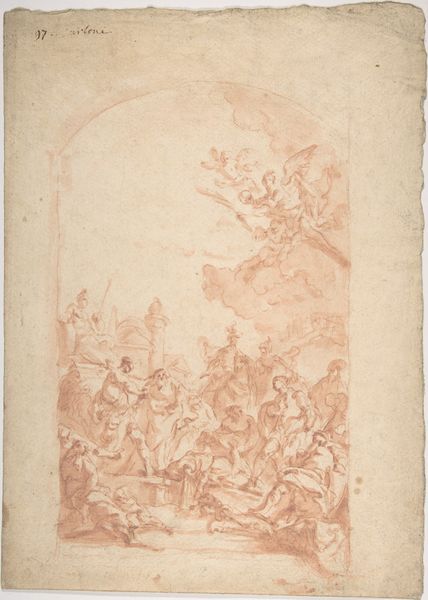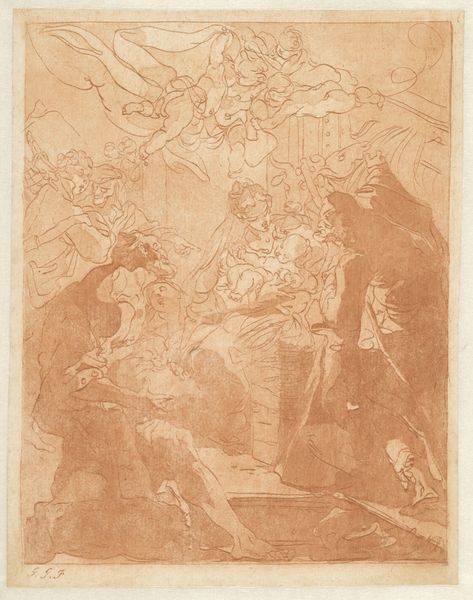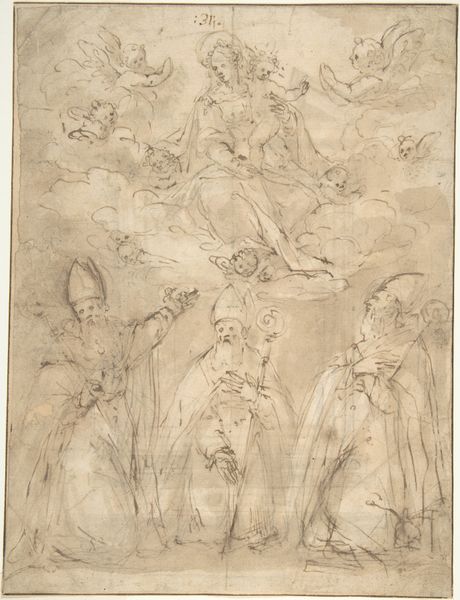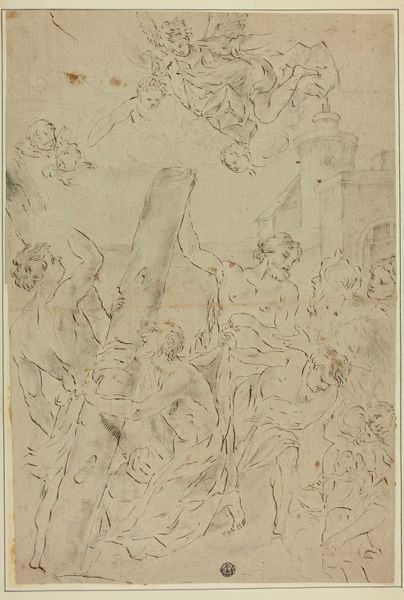
Celebration of Mass with the Virgin and angels in the sky 1662 - 1728
0:00
0:00
drawing, ink
#
drawing
#
baroque
#
ink painting
#
figuration
#
ink
#
history-painting
#
watercolor
Dimensions: 295 mm (height) x 227 mm (width) (bladmaal)
Curator: This delicate drawing is titled "Celebration of Mass with the Virgin and angels in the sky" by Paolo De Matteis, likely created sometime between 1662 and 1728. It's ink on paper and is part of the collection at the SMK, the National Gallery of Denmark. What's your initial take on it? Editor: Immediately, the tiered composition strikes me. The earthly ritual below contrasted with the divine realm above... there's a certain ethereal quality, even in a monochromatic work like this. The angels almost feel like a commentary on power structures. Curator: That's an interesting reading. From a historical lens, depictions of religious ceremonies like this served not just as devotional aids but also reinforced the authority of the Church within society. Consider the staging – the earthly participants almost form a foundation for the celestial event unfolding above them. The angels and the Virgin become figures that justify earthly hierarchy. Editor: Exactly. And consider whose experiences were excluded from such celebrations and representations. The gaze here is very particular, very controlled. Who had access to this kind of image, and what narratives did it perpetuate about gender, class, and devotion? Was this piece challenging religious conventions, or merely upholding the status quo? Curator: The Baroque style emphasizes grandeur and drama, often to inspire awe and reverence. However, the materiality, ink on paper, suggests this may be a preparatory sketch, perhaps for a larger, more permanent altarpiece. Understanding its status is important to understanding how its visual rhetoric functions. This wasn’t meant for wide circulation, so the audience and its social function are specific and complex. Editor: Right. The medium definitely shapes the message. Knowing this might be a study shifts our perspective. The sketch-like quality invites us to consider the artistic process, how De Matteis was grappling with visualizing the divine. And, given your point about circulation, it highlights how elite spaces were often where these theological and social ideas were negotiated. It almost encourages me to look past the apparent symbolism to ask deeper questions about how the work might engage the concept of social difference through the lens of class and power. Curator: Ultimately, pieces such as this allow us a richer insight into the intertwined spheres of faith, power, and artistic endeavor. Editor: It challenges us to reconsider art history not only through technique but also in regards to the excluded and the silenced voices.
Comments
No comments
Be the first to comment and join the conversation on the ultimate creative platform.
